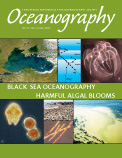First Paragraph
It was not until the late 1980s that the international community became aware of the magnitude of the ecological crisis underway in the Black Sea. Major components of the ecosystem had begun to collapse as early as 1973 when records show significant areas of summer hypoxia (low oxygen content) on the northwestern shelf as a result of eutrophication (an increase in the water’s nutrient content, which enhances plant growth, but leads to oxygen depletion). In a remarkably short space of time, perhaps as little as five years, these hypoxic areas extended over most of the shelf, some 12 percent of the surface of the 420,000 km2 Black Sea (Zaitsev, 1992). In the late 1980s, the hypoxic events had become so severe that huge quantities of benthic organisms had died and were washed up and rotting on the beaches of Romania and Ukraine. At the same time, commercial yields of the relatively abundant anchovies had plummeted throughout the Black Sea following a decade of decline of fisheries of higher-value predatory species. Then, there was the arrival of the uninvited comb jelly Mnemiopsis leydi, transported in ballast water from the eastern seaboard of America. The Mnemiopsis population in 1989 was estimated as 800 million tonnes with biomasses as large as 5 kg/m2 in places (Vinogradov, 1992). By 1992, when the alarm bell was sounded for international support to the Black Sea (Mee, 1992), the future of this unique marine system seemed grim. Social and economic collapse in the countries emerging from communism gave the Black Sea a window of opportunity for recovery and for the countries in the region to put management systems in place to enable recovery and avoid further decline. These systems rely on sound and relevant scientific information. In this article, we shall examine the management systems, discuss the scientific uncertainties, and take a look at some of the actions being taken to reduce these uncertainties.

